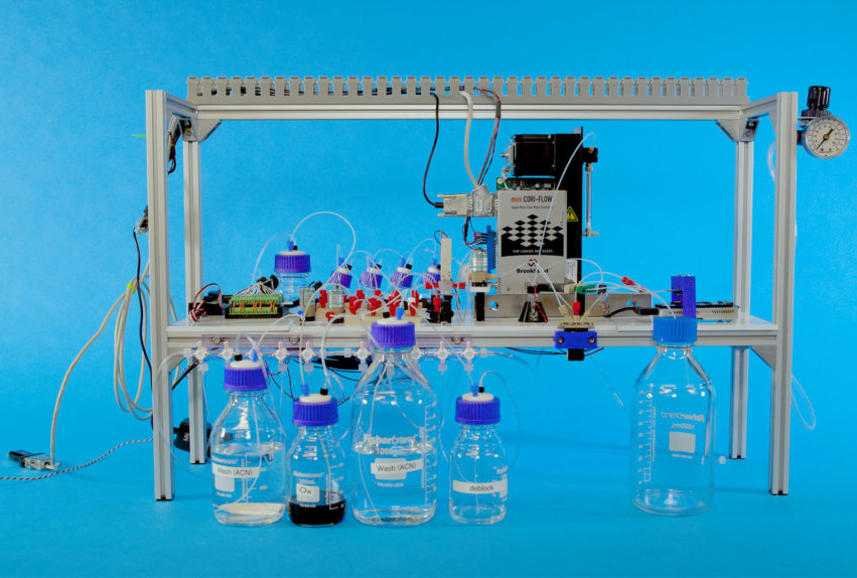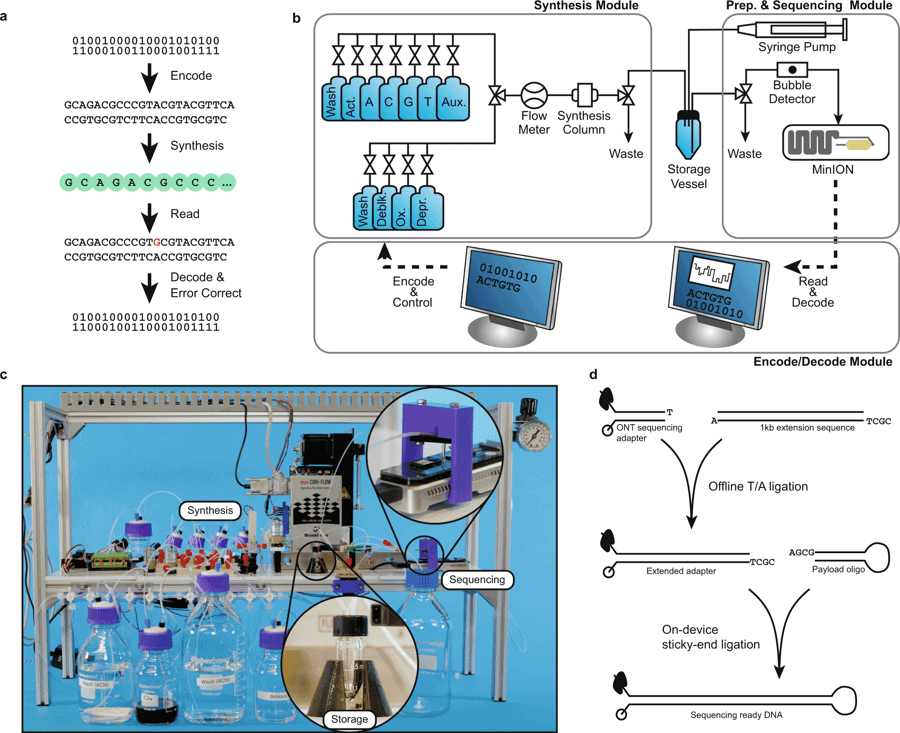Η Microsoft παρουσίασε ένα αυτοματοποιημένο system DNA data storage that could one day replace optical storage systems like Facebook's Blue-ray cold storage.
Microsoft believes that synthetic DNA could be the next big step in long-term data storage, since only one gram of DNA is capable of storing 215 petabytes data for 2.000 years. If released publicly, technology could significantly reduce the space required to store the rising world data.
The researchers of Microsoft, Microsoft founder Paul Allen and the school of computing science at the University of Washington managed to build a complex system to create the world's first automated DNA storage device.
Using a first proof-of-concept DNA storage device, the researchers demonstrated the potential enrollmentand reading, encoding the word 'hello' into DNA fragments.
Η unit bench-top costs about $10.000 but the researchers believe it could be made at a third of the cost by removing sensors and actuators.
Η unit, described in Nature, consists of computers with coding and decoding software that translate aces and zeros into four DNA bases: A, C, T, G. There is also a DNA synthesis unit and a DNA preparation unit, among which there is the space the DNA is stored.
"Our main goal is to bring a system to production, which in the end user, will be very similar to any other cloud storage service. The bits will be sent to a data center and stored. Then they will appear again only when the client wants it "said Karin Strauss, researcher of the project.
____________________
- Focus Mode by Google: what it is and how to turn it on
- Facebook: millions of codes in plain text
- Google announced Stadia, an online gaming service
- Google plus Save your data before 31th March





